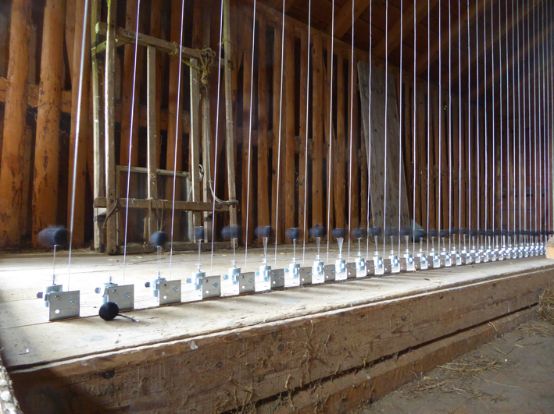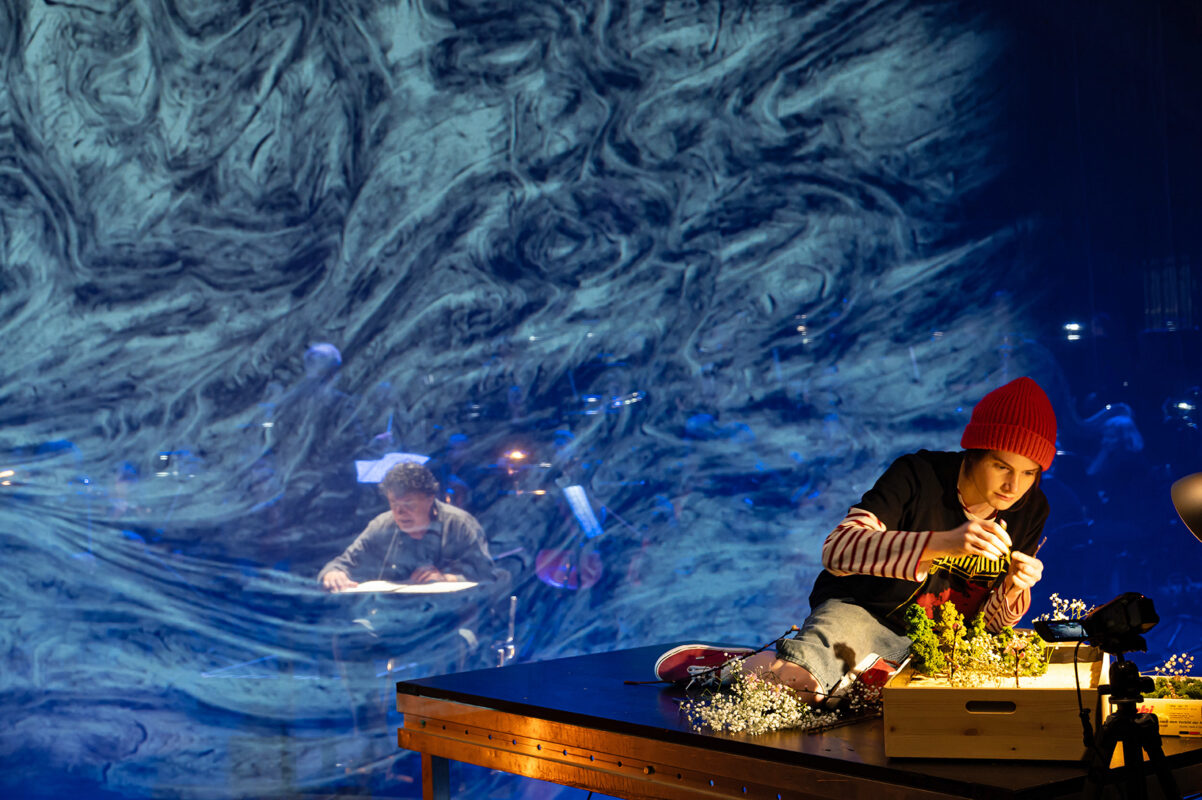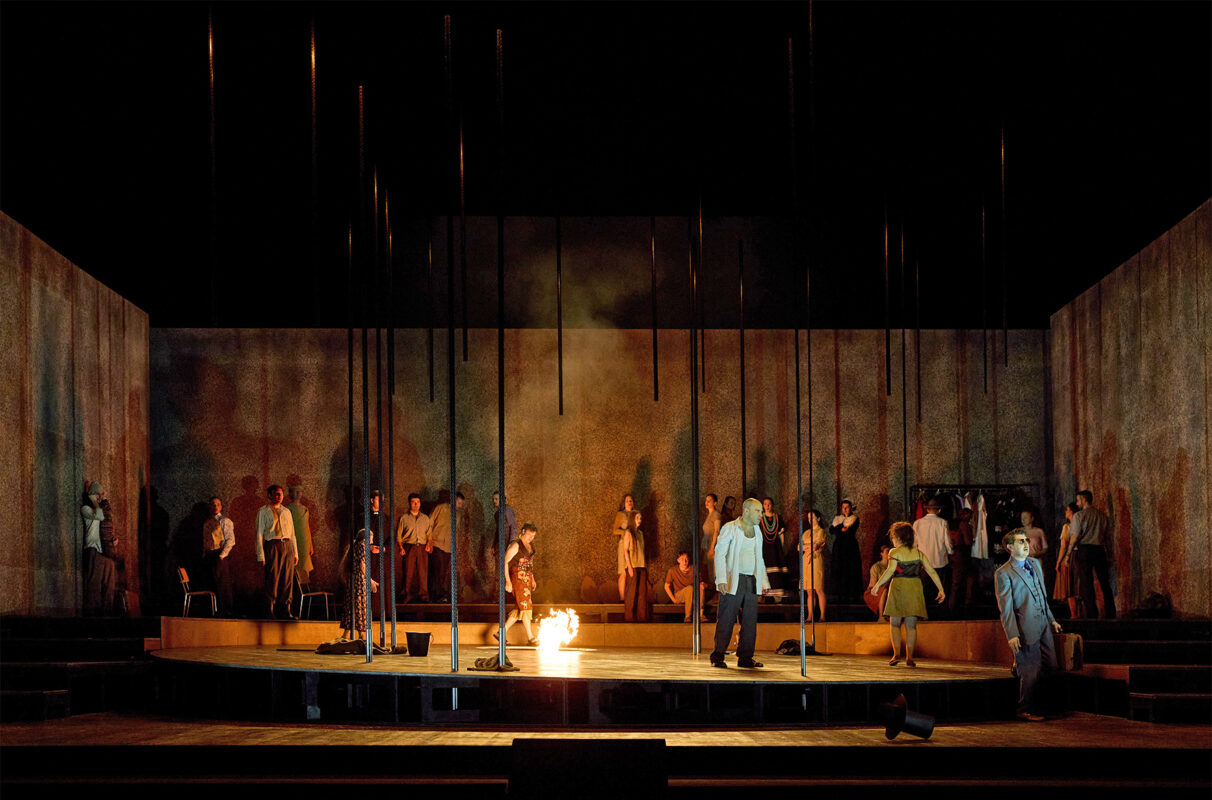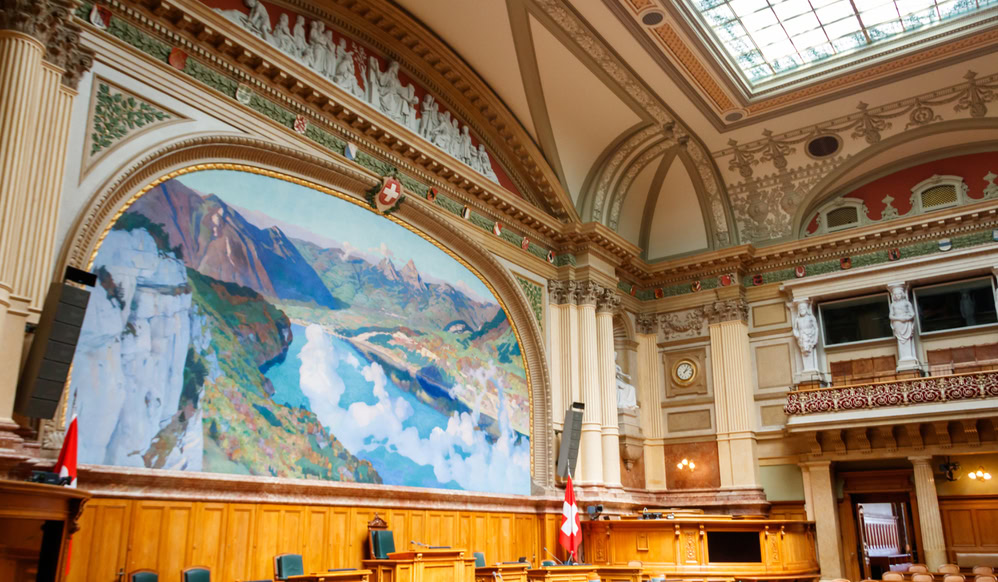Go into the bonnets
Sound installations in the Appenzell upland moor. How the idyll can scratch and the moor can whoop.

It was still a slightly damp but opening Sunday afternoon, inviting numerous art lovers and families to go out into the Schopfe. This is apparently how the word "Schöpfe" is used in the area, as opposed to the usual plural of the word "Schopf", which is largely extinct in High German. There are a number of these stables and sheds in this moorland near Gais, as there are in Appenzell in general. And if, as a child, you always had the inclination to delve into these buildings and count the hay, this was a wonderful opportunity.
"Klang Moor Schopfe" is the name of the small festival, which took place for the first time at the beginning of September and may, the organizers are not yet sure, be continued. The nine sound locations are barely half a kilometer apart - and easy to reach even after heavy rainfall. There was no uniformly curated concept, nor was there supposed to be, but the juxtaposition of completely different concepts was as appealing as it was instructive - to the question: How do the artists go about their work?
Research, shoot, bomb
While one of them, Olga Kokcharova, who comes from Siberia and lives in Geneva, walked through the moor with moss researchers and created a spatial installation from the excerpts of the conversations, the Austrian Rupert Huber hung his sounds and an accompanying, admittedly very open score in a corner and turned the barn into a small temple of art. The one provided documentation, the other transformation, and both did not go far enough here.
The more interesting example of documentation, almost over-documentation, was offered by the Bernese ethnologists of the Norient group with a Theatre of Warwhich they set up in a shooting range of all places. With headphones and a telescope, you felt localized, only the firearms were missing. But it was precisely these that were then addressed in the contributions that could be heard. Through the reports of artists from war zones in Israel, Palestine, Syria and Serbia, a field of experience was opened up, precisely in this idyllic environment, where there is also shooting.
A transformation was attempted by the two German artists Albert Oehlen and Wolfgang Voigt, who bombarded a tree reassembled from branch fragments with flashes of light and harsh drumbeats. This was less nice and noble and demonstrated a broken nature. Not a place where one would like to linger for long - but it remained in the memory.
Annoy, wear down, amaze
Jason Kahn, on the other hand, the US musician living in Zurich, explored the Appenzell soundscape and hung his sound impressions noted on sheets of paper together with snippets of song in a barn. We encountered a city dweller who doesn't feel at ease in this rustic landscape, but doesn't resign himself to it in a friendly manner, but instead adds his own annoyance, for example when the blare of a cowbell competes with the tinnitus in his head.
Most of the artists did not concern themselves with the pretty landscape arrangement, but rather rubbed and scratched at it. Some of the activities in the supporting program also made this clear. Such a barn or stable, where the hay is still lying and it smells a little like a cow, naturally has its own cachet, although I would like to add, despite all the sound installations, that every room actually has a special effect when it is exhibited and provided with sound. This is why Norbert Möslang's sounding and neon-lit blue cuboid or Svetlana Maraš's fine sound-generating water machines were so effective. Such simplicity - regardless of the setting - has something enigmatic about it, although it is hardly surprising.
Touch, float, whoop
Two other rooms were more surprising. The "Living Instruments" by the percussion ensemble WeSpoke and the biology group Hackuarium actually consist mainly of a mossy room. Two of the moss surfaces can be touched and groped, stroked and scratched - triggering electronic sounds. You could lose yourself in playing.
-

- Photo: Thomas Meyer
- Zimoun lets the mop of hair float
This trip to Gais was rewarded with such variety. Of course, there was only one thing missing, which is a must in Appenzell. This time, blasting master Roman Signer only delivered "one low tone", which of course came at a different pitch each time it was triggered by the motion detector. At the ninth barn, it boomed across the landscape as if from the last pipe, once again calling out the small expanse and solitude of the moor, like a minimal whoop from the moorland underworld.
The festival continues until September 10.








